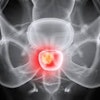It looks like Washington, DC, is ground zero for May's radiology roundups; no less than four are scheduled in the city and its environs, in some cases occuring simultaneously. The city on the Potomac will host the annual meeting of the American Society of Head and Neck Radiology May 4-7, followed by the American Roentgen Ray Society's centennial conference beginning May 7. And the American College of Radiation Oncology's 10th annual meeting takes place there as well, May 6 and 7.
The American Brachytherapy Society will hold its 2000 meeting a little later, from May 19-21 in Crystal City, VA, just outside DC. This year marks the organization's second international meeting, to be held jointly with the Groupe Européen de Curietherapie (GEC) the European Society for Therapeutic Radiology and Oncology (ESTRO), and Grupo Latino Americano Curieterapia (GLAC).
These are interesting times for brachytherapists, who are weighing a fresh batch of studies showing the therapy to be effective in treating prostate and breast cancer, and in preventing arterial restenosis following angioplasty.
"About two-thirds of the sessions are international, so we're pretty excited," said Dr. Frank Vicini, a radiation oncologist at William Beaumont Hospital in Royal Oak, MI, who serves as scientific program chair for the conference.
A workshop on the first morning will mainly cover specific aspects of brachytherapy in treating prostate cancer, Vicini said. The afternoon session breaks new ground with presentations on each of the various types of radiation therapy used to treat prostate cancer, Vicini said, including 3-D conformal beam radiation therapy, permanent seed implants, and neutrons, as well as surgery.
"We'll be able to evaluate all of the various modalities for whatever stage (of cancer), PSA (level), and Gleason score," he said. By eliminating the subjectivity of the results, a doctor whose patient fits a certain profile could find the most statistically useful treatment modality, Vicini said.
"It's doubful that you'll ever get a randomized trial for prostate cancer, so I think that in the future you're going to get more meetings that are formatted like this."
Another hot topic is brachytherapy's apparent success in preventing restenosis following angioplasty. "For now it looks like the most potent inhibitor," Vicini said.
Finally, Vicini said, the meeting will include major presentations on breast cancer, where brachytherapy has been used to reduce the length of treatment from 6 1/2 weeks to one week for standard breast-conserving therapy. More information is available by e-mailing [email protected] or at the American Brachytherapy Society's Web site.
ARRS meeting"A Century of Progress" is the theme for the 100th annual meeting of the American Roentgen Ray Society, to be held May 7-12 at the Washington, DC, Marriott Park Wardman Hotel. The program, designed to evaluate the latest clinical and scientific developments in all modalities of diagnostic radiology, has been expanded this year, according to its organizers. And a historical exhibit will spotlight 100 years of accomplishments in radiology's oldest organized society, established just five years after Wilhelm Conrad Roentgen's discovery of x-rays in 1895.
Among this year's highlights are a categorical course on trauma radiology, an expanded instructional program with 87 courses, and a symposium on cardiovascular imaging in the new millennium. A new issues forum will discuss innovative applications of multislice CT imaging. A special centennial lecture will be presented on May 9 by Dr. Raymond A. Gagliardi. On May 11, Dr. James H. Thrall of Massachusetts General Hospital in Boston will talk about the future of radiology.
"We've got a special course all day Sunday on radiology life support," said Susan Cappitelli, the executive director of ARRS. "It'll be taught by a team of radiologists with support from the Mayo Clinic. Also, a lot of our attendees have registered for our luncheon presentations Monday through Thursday. This is the second year for the series, which is focused on socioeconomic issues. There's one on PACS, one on group-practice models, one on NIH imaging research priorities and funding opportunities, and one on different competitive strategies for radiology practices."
For the first time, this year's meeting will have sessions geared for different career stages of radiologists, she said, including Sunday courses on estate planning, and one called "Changing the paradigm on aging: successful self-management in the 21st century."
"We've got something unique going on the Saturday before the meeting as well -- a special one-day symposium on clinical problem-focused imaging of the head and neck," she said. The sessions will be conducted in cooperation with the American Society of Head and Neck Radiology's (ASHNR) annual meeting, and will cover the appropriate imaging correlates of clinical signs and symptoms.
You can find out more about registration and the American Roentgen Ray Society's first 100 years at http://www.arrs.org/meeting/regbrochure/.
ASHNR meetingThis year's annual ASHNR meeting will be conducted jointly with the European Society of Head and Neck Radiology, May 4-7, and will take place in the same hotel as the ARRS conference. Along with the joint symposium mentioned earlier, conference highlights will include an afternoon session on back-to-basics radiology of the head and neck, a comprehensive review of the temporal bone, and comprehensive reviews of head and neck oncology, oral and peri-oral lesions, and neck and lymph nodes.
Saturday's joint symposium will cover a wide range of clinical issues related to head and neck imaging, including cerebrospinal fluid leak, Horner's syndrome, and evaluation of the hoarse patient. More than 200 ARRS members have already signed up for the joint symposium, according to ASHNR program chair Dr. Anton Hasso, head of radiological services at the University of California, Irvine.
"Saturday's session is a review from a clinical standpoint, so it's symptom-driven. It includes patients with tinnitus, patients with visual loss, etc.," Hasso said.
Among the must-see presentations is a discussion of facial pain by Dr. Jahn Casselman, head of neuroradiology at the Academic Free University Hospital (A.ZU.) in Brugge, Belgium, Hasso said.
"It's a summary of all the cranial nerves that are involved in mediating pain, with an emphasis on MR. He's done some incredible very-high-resolution studies, and showed us some things the rest of us wish we'd thought of," Hasso said.
The discussion on tinnitus, by Dr. Jane Weisman, professor of radiology at the University of Oregon, should also be very engaging, Hasso said. And Dr. David Yousem of Johns Hopkins University in Baltimore will give a talk about functional MRI in the head and neck.
"He's a world authority on olfactory activation," Hasso said. "He's shown that there are multiple sites throughout both (brain) hemispheres that mediate the sense of smell."
The meeting concludes with a series of presentations on cutting-edge techniques in head and neck radiology, including image-guided surgery, percutaneous transvascular procedures, and a session on functional imaging comparing PET, SPECT, MR spectroscopy, and functional MRI, taught by Dr. Surech Mukherji of the University of North Carolina in Chapel Hill.
Mukherji will discuss differentiating tumorous from inflammatory lymph nodes, and prognostic tools in terms of treatment results, Hasso said, noting that the metabolic nature of SPECT imaging makes it particularly useful in separating residual tumor from scarring within a few weeks after surgery.
"With CT and MRI, generally you have to wait at least two months and even then, it may be impossible," he said.
More information about the ASHNR meeting is available at www.ashnr.org/meeting_program.html.
Finally, ACRO, the American College of Radiation Oncology, hosts its annual meeting May 6 and 7 at the Park Hyatt in -- you guessed it -- Washington, DC. Topics will include a review of major federal initiatives sure to affect radiation oncologists, and courses on practice accreditation as a key component of modern-day medicine, according to the organizers. Business education issues will round out the two-day forum designed to assess the socioeconomic and educational issues facing radiation oncology. More information can be found in the ACRO Bulletin, or by writing [email protected].
By Eric Barnes
AuntMinnie.com staff writer
May 3, 2000
Let AuntMinnie.com know what you think about this story.
Copyright © 2000 AuntMinnie.com

















